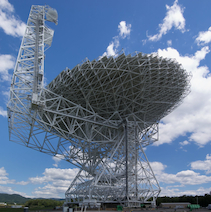Among the exoplanet candidates found by Kepler, many could be similar to our Earth. Astronomers have now started listening for signs of alien life on 86 of these possible Earth-like planets.
The Green Bank telescope, located in West Virginia, is the wold’s largest fully steerable radio telescope, and the world’s largest land-based movable structure. The massive dish began last week to home in on 86 planets, out of 1,235, and will collect 24 hours of data on each one.
The mission is part of the SETI program, which has recently put into hibernation the Allen Telescope Array, due to a lack of funds.
In this context, the Green Bank Telescope is the best tool available to undertake this search. The surface of the telescope is 100 by 110 meters and it can record nearly one gigabyte of data per second. The 7.7 million kilogram telescope became operational in 2000 and is a project of the National Radio Astronomy Observatory.
“We’ve picked out the planets with nice temperatures — between zero and 100 degrees Celsius — because they are a lot more likely to harbor life,” said physicist Dan Werthimer, who heads a SETI project in Puerto Rico.
The project will take about one year to complete, with the aid of numerous SETI@home users, who will help process the data on their personal computers.
Of course, 86 possible planets might seem a very small number (as these are exoplanet candidates, it could actually be less) to look for a sign of alien intelligence. But for the first time astronomers are looking where they know there might be planets, maybe similar to our own, and not just at a star similar to our Sun. That is a good start, and it is only the beginning.

